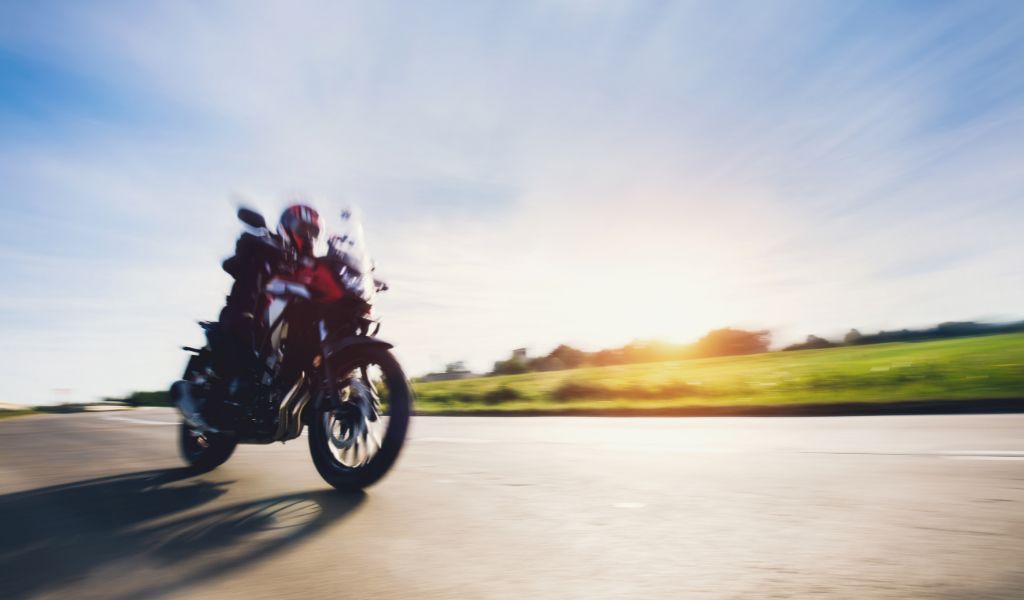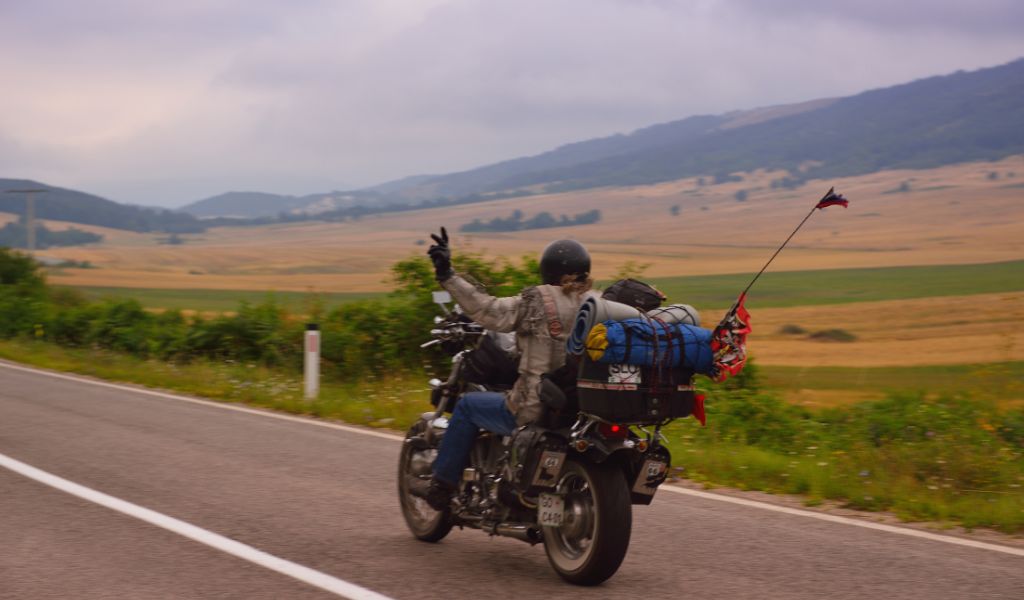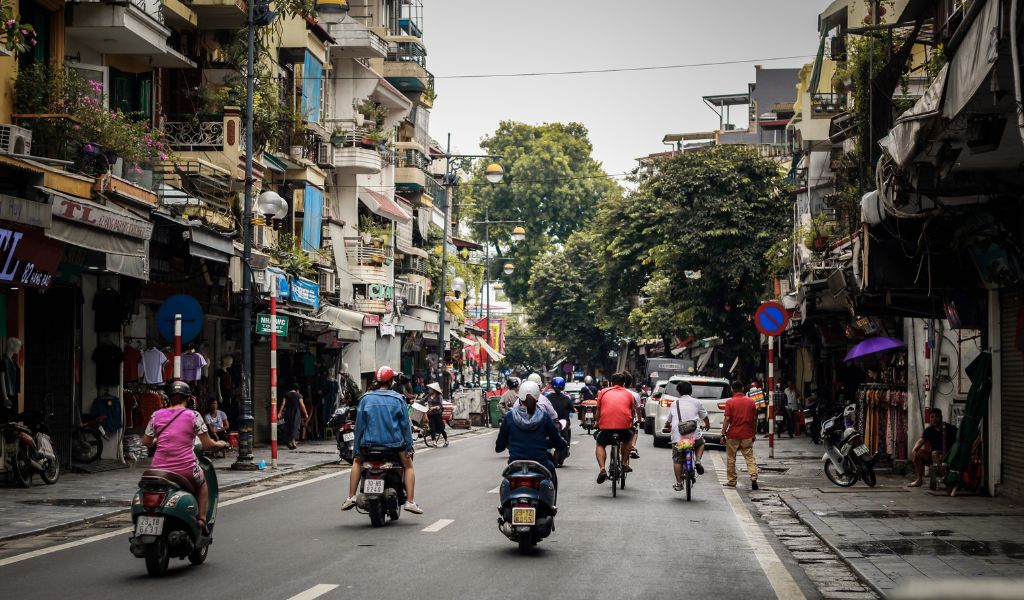Motorcycle touring is an exciting way to explore the open road and see new places.
Whether you’re embarking on a solo adventure or joining a group, it’s important to understand the principles of motorcycle touring etiquette.
Etiquette refers to the rules and codes of conduct that govern social interactions, and when it comes to motorcycle touring, it’s all about safety, respect, and consideration for others.
The goal of this article is to provide you with a comprehensive guide to motorcycle touring etiquette – from the dos and don’ts of riding in a group, to camping etiquette and respecting local customs while riding abroad.
By following these guidelines, you can ensure a safe and enjoyable experience for yourself and those around you.

Table of Contents
Explanation of Motorcycle Touring Etiquette
Motorcycle touring etiquette encompasses everything from proper gear selection to communication among riders.
It’s about maintaining a safe distance between motorcycles, signaling intentions clearly, respecting other riders’ space on the road or while camping overnight.
One essential element is ensuring that all riders are on the same page before setting out.
This means communicating with your group ahead of time so everyone understands where you’re headed, what route will be taken along with departure time & estimated arrival time etc.
This helps prevent confusion or disagreement during the ride.
Another critical element is safety. Whether you’re riding alone or with others in your group, safety should always be at the forefront of your mind when hitting the open road.
This means wearing appropriate protective clothing such as helmets that meet current safety standards (DOT approved). It also means obeying traffic laws like speed limits as well as taking into account weather conditions.
Importance of Following Proper Etiquette for Safety and Enjoyment
The importance of following proper motorcycle touring etiquette cannot be overstated. By observing the principles of etiquette, you can help ensure a safe and enjoyable experience for everyone involved.
When riders follow proper etiquette, it minimizes risks that arise from accidents or misunderstandings while on the road or camping out overnight.
Additionally, following proper etiquette also shows respect for others who are sharing the road with you or camping in the same area.
This means minimizing noise pollution and not affecting natural habitats in any way that can harm their ecosystem.
Motorcycle touring etiquette is about showing respect to fellow riders and communities, minimizing risks of accidents or misunderstandings while on tour as well as maintaining an enjoyable experience for everyone involved.
Following these guidelines will help create a positive atmosphere which makes the entire journey more fulfilling.

The Dos of Motorcycle Touring Etiquette
Plan Ahead and Communicate with Your Group
When planning a motorcycle tour, it is crucial to make sure that everyone in your group is on the same page. Before hitting the road, sit down with your fellow riders and discuss the route, stops, and expectations for the trip.
Make sure everyone is aware of any potential hazards or challenges that may arise during the journey. It’s also important to discuss communication techniques while on the road such as hand signals or radio communication.
Ride Safely and Obey Traffic Laws
Safety should always be a top priority when hitting the open road on a motorcycle. Make sure all riders in your group have proper safety gear such as helmets, gloves, and protective clothing.
Follow all traffic laws including speed limits, stop signs, and traffic signals. Always ride at a safe speed for current conditions including weather or road conditions.
Respect the Environment and Local Communities
When touring on a motorcycle it’s important to respect both natural environments and local communities you may encounter along your journey.
Always stay on designated roads or trails to prevent damage to natural habitats or endangered species in wildlife preserves. If you are camping during your tour make sure you are setting up camp only in designated areas and disposing of any waste properly.
Pack Appropriately and Be Prepared for Unexpected Situations
It’s essential to pack appropriately for any motorcycle tour with proper gear (including rain gear if necessary), first aid kit, toolkit(s), tire repair kit(s), spare fuel containers (if needed) among other things depending upon needs/situation/destination/location etc).
Properly packing will ensure that you’re prepared for any unexpected situations that may arise during your trip.
Be Courteous to Other Riders on The Road
Always be respectful to other riders on the road. This includes not tailgating, not passing recklessly, and maintaining a safe distance from other riders.
When riding in groups, maintain proper spacing and formation, and communicate effectively with hand signals or radios if necessary. Remember that safety is key when riding in groups.
By following these simple guidelines for motorcycle touring etiquette, you’ll be well on your way to a safe and enjoyable trip. Remember to always respect others on the road, stay aware of your surroundings, and have fun!

Don’ts of Motorcycle Touring Etiquette
Don’t ride under the influence of drugs or alcohol
One of the most important rules of motorcycle touring etiquette is to never ride under the influence of drugs or alcohol.
Riding a motorcycle requires concentration, coordination and quick reflexes, and any impairment can lead to dangerous situations on the road.
Drugs and alcohol can affect your judgment, vision, balance, and reaction time. Even if you think you’re not impaired, it’s better to err on the side of caution and wait until you’re sober before getting back on your bike.
In addition to putting yourself in danger, riding while impaired can also put other riders at risk. If you’re planning to have a few drinks or take any medication that may cause drowsiness or impair your ability to function normally, it’s best to find another way home.
Don’t ride aggressively or show off on the road
Another important rule of motorcycle touring etiquette is to ride safely and avoid aggressive behavior on the road.
Some riders may be tempted to show off their riding skills or compete with others on the road by weaving in and out of traffic, speeding excessively or making sudden maneuvers. This type of behavior not only puts yourself in danger but also endangers other riders and motorists around you.
Motorcycle touring etiquette requires that all riders maintain a safe distance from other vehicles on the road and follow traffic laws at all times.
Avoid speeding excessively or racing with other riders as it could lead to accidents that could have been easily avoided.
Don’t litter or damage natural habitats
Motorcycle touring often takes place in beautiful natural locations like forests, mountainsides, deserts etc., where littering can cause long-term damage for both wildlife habitats and scenic beauty.
When taking breaks during long-distance rides in national parks reserves or nature preserves, ensure that you properly dispose of all trash and litter in designated areas or carry them with you until you reach a proper disposal spot.
In addition to littering, riders should also be mindful of any other actions that could harm the environment. Avoid damaging plant life, disturbing wildlife and leaving behind tire marks on sensitive areas as they can cause long-term damage.
Don’t disrupt local communities or disturb wildlife
One of the basic principles of motorcycle touring etiquette is to respect local communities and their customs when riding through them. Riders should avoid loud noises, playing loud music or revving engines in residential areas or around places of worship.
In addition to respecting locals, riders should also be mindful not to disturb the wildlife in natural settings. Avoid feeding wild animals, interfering with their habitats or making sudden loud noises that can startle them unnecessarily.
Don’t neglect basic maintenance on your motorcycle
Another important rule of motorcycle touring etiquette is to keep your bike in good condition at all times. Neglecting maintenance could lead to unexpected breakdowns during long-distance rides which could not only be inconvenient but also hazardous if it happens on a highway.
Regular maintenance like oil changes, tire pressure checks, brake inspections etc., are essential for safe riding practices and helps prevent any surprises during long distance rides.
Group Riding Etiquette
When it comes to group motorcycle touring, it is essential to follow proper group riding etiquette to ensure that everyone stays safe and enjoys the ride. One important aspect of group riding etiquette is formation riding techniques.
The staggered formation is the most common technique, where riders are positioned in a diagonal line with a safe distance between each motorcycle. This formation allows each rider to have a clear view of the road ahead while minimizing the risk of collision.
Communication signals between riders are also crucial for group riding etiquette. Hand signals are commonly used for communication between riders.
For example, pointing down with your left arm indicates that there is an obstacle on the road, while tapping your helmet with your left hand indicates that you need to stop for a break. Proper spacing between motorcycles is another key aspect of group riding etiquette.
Each rider should maintain a safe following distance from the rider in front of them while staying within their designated lane. Riding too close can lead to accidents or collisions if sudden braking or swerving occurs.
Camping Etiquette
Camping during a motorcycle tour can be an enjoyable experience amidst nature’s beauty, but it’s essential to follow proper camping etiquette not only for safety and comfort but also for preserving natural habitats and landscapes.
It’s critical to set up camp only in designated areas provided by authorities or camping sites near motorcycle-friendly routes. Proper disposal of waste and trash in nature areas is also necessary as littering pollutes nature’s beauty and harms wildlife.
Riding Abroad Etiquette
Riding abroad is an exciting adventure that requires knowledge about local traffic laws and customs. Understanding these laws and customs can help you adapt your riding style to the environment and enjoy a safe journey.
Respecting cultural differences while riding is crucial when traveling abroad. Some cultures may view certain actions as rude or disrespectful, so it’s essential to research and learn about local customs before embarking on your journey.
Rarely Known Small Details
Importance of Understanding Hand Signals
While riding in a group, it is essential to understand hand signals used to communicate between the riders.
One hand signal that is often overlooked is the “hazard” signal, which involves pointing with two fingers towards the ground to warn others of a hazard on the road ahead.
Similarly, when turning left or right, use your left or right arm respectively while showing a clear intention of your direction. These hand signals can save lives and prevent accidents.
The Importance of Wearing Earplugs While Riding
The wind rushing past your ears while riding can cause hearing damage over time.
Many motorcycle riders wear earplugs to reduce noise levels while on long rides, but some riders still neglect this important piece of protection gear. Earplugs do not block out all noise but simply provide a safer decibel level for your ears.
Bringing Extra Fuel While Riding in Remote Areas
While touring through remote locations, it’s important to be prepared with extra fuel as gas stations might be far apart from each other or might close early due to lack of customers.
Research and plan ahead for where you will find gas stations during your journey. Additionally, bring extra fuel even if you don’t think you’ll need it because running out of gas on an empty road can be dangerous.
Conclusion and final thoughts
Touring on motorcycles is not only fun but also requires responsibility towards oneself and towards others around us.
Following motorcycle touring etiquette allows us to have safe and enjoyable rides that leave people with positive memories instead of negative ones.
Always remember that proper communication within groups and respect for local communities go hand in hand with having memorable experiences on the open road.




